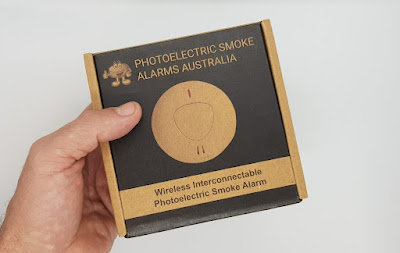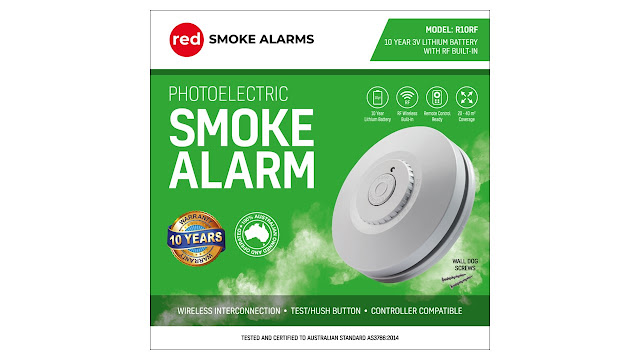Smoke alarm secrets and the Australian Standard - read this before buying!
Section 4.22.1 of the Australian Standard describes the markings
and types of information included on the smoke alarm itself. If the
smoke alarm does not have all this information on it – then technically it is non-compliant
to the standard.
Have a look at your photoelectric smoke alarm to double check if it has the
following information.
4.22 Marking
4.22.1 Smoke alarm
Each smoke alarm shall be legibly and indelibly marked
with the following:
(a) The number and date of this Standard (i.e. AS
3786:2014).
(b) The name or trademark and address of the
manufacturer or supplier.
(c) The model designation (type or number).
(d) The type of smoke alarm (type A or type B), e.g.
photoelectric or ionization.
(e) The alarm condition aural signal pattern (ISO 8201
or ISO 7731).
(f) The date of manufacture which may be coded into a
serial number or the batch
number.
(g) The recommended date for replacement, subject to
normal, regular maintenance
NOTE: Provision may be made for a place to note the
date for replacement of the smoke
alarm.
For smoke alarms incorporating non-replaceable batteries
(i.e. 10 year lithium long life batteries sealed inside the unit), the following
warning is also required:
WARNING: BATTERY NOT REPLACEABLE—SEE INSTRUCTION MANUAL.
Additionally, a notice on the outer surface of the enclosure
marked ‘DO NOT PAINT’ is required. The letters shall be not less than 3 mm high
and plainly visible after the smoke alarm is installed in its intended manner. Be wary of many cheap ‘knock off’ smoke alarms
sold in online marketplaces such as e-bay and Amazon – they do not have all
this required information even though they profess to comply to the Australian
Standard. Whilst it may seem like trivial semantics whether the smoke alarm has
this information on it or not, in the event of a house fire and subsequent
insurance claim, your insurer will be double checking this same information
prior to making any potential pay-out.
 |
| Photoelectric smoke alarm with the required 'DO NOT PAINT' marking as per AS 3786:2014 |
Section 4.22.2 of the Australian Standard identify the
information data which must be incorporated into the smoke alarm’s point of
sale packaging (i.e. the box it comes in) and also the instruction manual. As
before, if the information below is not included then technically the smoke
alarm is non-compliant to the standard.
4.22.2 Packaging
The point-of-sale packaging shall be marked with the
following:
(a) The model designation (type or number).
(b) The type of smoke alarm (type A or type B) and an
explanation of the meaning of the type designation (e.g. photoelectric or
ionization).
(c) The nominal sound level output.
(d) The alarm condition aural signal pattern (ISO 8201
or ISO 7731).
(e) For smoke alarms using 520 Hz alarm condition
signal frequency, the nominal frequency.
(f) For type B smoke alarms, permanently marked with
the trefoil symbol, and name of
radionuclide and activity. The markings shall be
visible from the outside of the packaging.
(g) The maximum number of interconnectable smoke
alarms.
(h) Statement if the smoke alarm is suitable for wall
(vertical) mounting.
In summary, section 4.22 of the Australian Standard
describes the necessary information which must be included on the alarm, packaging and in the instruction manual. It is a requirement which manufacturers and retailers must adhere to.
QLD legislation states that smoke alarms must be photoelectric,
interconnected and conform to Australian Standard 3786:2014. Failure to do so
could have implications in the event of any insurance pay-out following a house
fire.
We hope you have enjoyed the second instalment of our
multi-part series. Australian Standard 3786:2014 copyright belongs to SAI Global.



Comments
Post a Comment